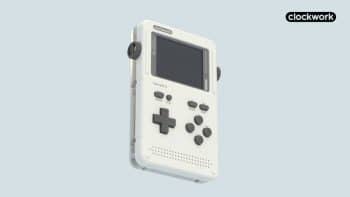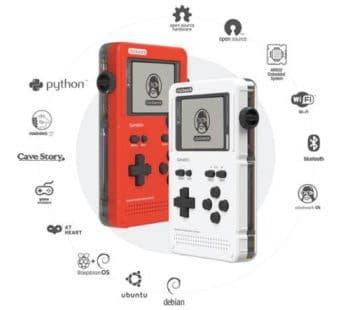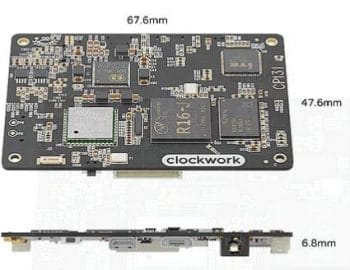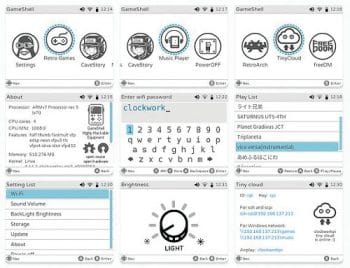For those who are retro game afficionados, Clockwork GameShell is just the ticket. It is a hands-on DIY kit which converts into a portable gaming console. Priced at around US$ 160, it is a good buy for game enthusiasts. It can also be converted into a music player and so would make a good travel companion.
Clockwork GameShell is a modular, hackable, portable retro game console with a GNU/Linux embedded operating system. It is bundled with a DIY kit and requires some assembling. After assembly, the end user can use it as a full-fledged handheld gaming console capable of playing thousands of classic games ranging from Atari, GB, GBA, NES, SNES, and many of history’s greatest games.
The GameShell console is completely open source and GNU/Linux based. It supports tons of programming languages like C, Python, LUA and LISP. It’s a small ‘Clockwork Pi’computer and can be considered a good example of how technology is revolutionising handheld gaming devices. Backed by a Kickstarter campaign that raised over US$ 290,000 in 2017, GameShell features a custom-built board — Clockwork Pi v3.1.
Being a modular system, all the five key modules are housed inside the plastic case.
These five GameShell modules are:
- The 6.8cm (2.7 Inch) 320 x 240 pixel RGB display screen with 60 frames per second.
- An Arduino compatible programmable game keypad with buttons labelled X, Y, A and B, apart from the Select, Start, Menu, Shift and D-Pad buttons.
- A front-facing stereo speaker
- A 1200mAh battery
- The ARM-based main development board, i.e., Clockwork Pi

Features of GameShell
- As it is powered by the Linux OS, every game published on it is free, open source and modifiable.
- GameShell also comes with RetroArch preinstalled, along with full versions of Cave Story and freeDM (a Doom clone) to get started. It’s easy enough to copy over MAME, GBA and NES ROMs, install new RetroArch cores, and even load up music files for the built-in music player.
- The microSD card comes preloaded with a Debian Linux derivative, known as ‘Clockwork OS’. It’s just Debian with kernel patches applied for the hardware. The OS boots to a simple launcher interface that can be used from the gamepad. The launcher has big icons, and it’s easy to add more of them by adding new files in certain places. All OS customisations are open source and on GitHub. The launcher is just a Python app based on Pygame that runs in the user space.
- PICO-8 software, which is basically D-Pad controlled software to enable the development of new games, has been included.
- GameShell is lightweight and pocket-sized. It has an easy-to-use UI, a good battery life and a design almost like Nintendo Gameboy.
- With the capacity of Clockwork Pi, there are many creative ways to modify and develop the gaming console, such as by creating a DIY wireless speaker, programming a remote to control devices, or making smart toys that interact with Lego blocks.
The GameShell kit includes the following:
- New Clockwork Pi v3.1 (quad-core Cortex-A7 CPU, Wi-Fi, Bluetooth, 1GB DDR3 RAM, micro HDMI output)
- ATmeage168p programmable keypad
- 2.7 IPS RGB 320 x 240 screen @60fps
- Dual speakers
- 1200mAh rechargeable lithium battery
- Lightkey module
- 16GB microSD card
- 14PIN GPIOs development cable
- Clockwork Pi OS with Linux kernel version 4.1x
Clockwork Pi development board
Clockwork Pi (CPI) is designed to be hackable, being powered by an Allwinner R16 processor to run Linux, as well as an Arduino compatible Atmel AVR MCU.
Its technical specifications are:
- Allwinner R16-J quad-core Cortex A7 CPU @1.2GHz with Mali-400 MP2 GPU
- 1GB DDR3 memory
- MicroSD card slot with support up to 128GB of memory
- Micro HDMI output (720p)
- Wi-Fi (802.11 b/g/n) and Bluetooth 4.0 on-board
- USB OTG supported
- Small size and with PMU (power management unit)
- Audio output (3.5mm headphone jack)


The Clockwork Pi operating system
The Clockwork Pi operating system comes preinstalled on an SD card and is based on Debian 9 ARMhf and Linux kernel 4.1x. It supports the running of various software including PICO 8, LOVE2D, PyGame, Phaser.io, Libreto and other game engines. The operating system has a monochrome-style UI, which lets end users navigate all features of the GameShell console. The user can adjust settings, launch software, play music and even Cloudwork Pi cloud access is possible using standard controls. It includes emulators for GameBoy Advanced and the indie game Cave Story. It comes with RetroArch, acting as a frontend for emulators.
Pros
- Good for almost all age groups and easy to assemble
- Modular design that’s fully open to modification
- Good build quality
- Customisation options bundled with the system
- Light bar module gives bonus buttons
Cons
- Battery limitation of 1200mAh
- Some games look squashed/cluttered with a 320 x 240 display


Final verdict
GameShell is a superb handheld gaming console and can be termed as a gamer’s heaven. It is best for hard core techies and developers. It allows end users to play almost every retro game that exists till date, but requires an understanding of Linux, the command line, etc. With the updated Gamepad, GameShell is a delight to play all retro games on. The screen could have been better for an enhanced user experience.
So, if you are looking for a solid portable retro-gaming machine, GameShell is the best for you.
It is priced at US$ 159 for users and US$ 139 for students [https://www.clockworkpi.com/shop-1].



















































































